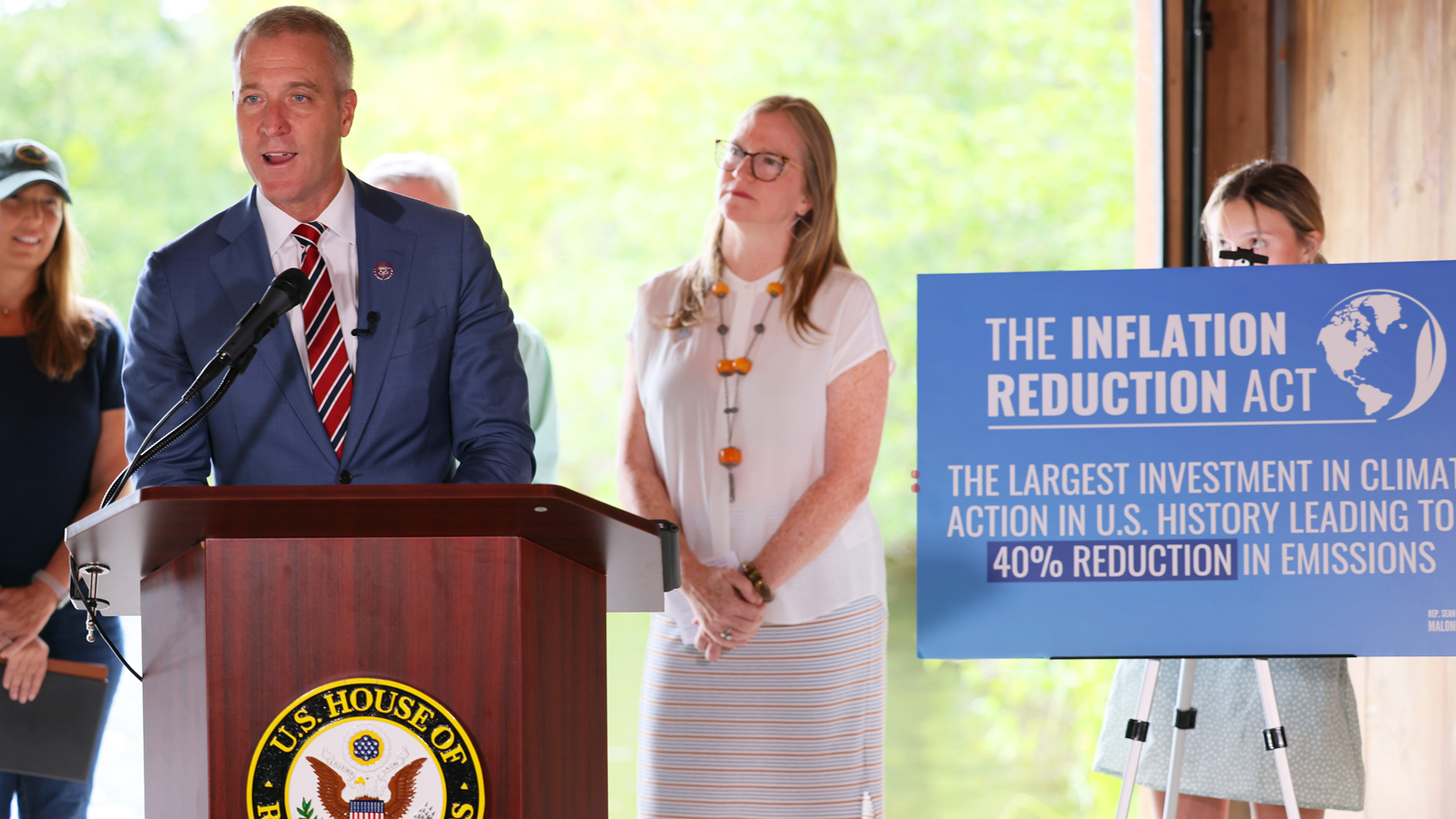If you’re planning to make your home more climate-friendly, new rebates could soon help you save thousands of dollars on those improvements. But first, your state or territory must design a rebate program. And the timeline for getting those programs up and running is still murky.
The rebate program will be funded under provisions in the Inflation Reduction Act, landmark legislation that Democrats passed in 2022 to address climate change. It incentivizes Americans to cut pollution by adopting cleaner electric appliances and making their homes more energy efficient. Under the law, federal tax credits and point-of-sale rebates will make those improvements cheaper. Low-income households, for example, may qualify for an $8,000 rebate on heat pumps, though final rebate amounts will be determined by the states. The rebates will be available at the point of purchase, meaning that customers won’t need to wait until tax season to reap the cost savings.
Tax credits for solar panels, electric appliances, EVs, home energy audits, and more went into effect in 2023. But rebates programs are taking longer because each state or territory must design and run its own program.
So where are the rebates, and when might you expect to be able to claim them?
When will clean energy rebates be available to consumers?
Each state is responsible for distributing rebates and deciding which technologies qualify. To do so, some states need to build energy offices from scratch. Sara Baldwin, senior director of electrification at Energy Innovation, an energy and climate policy think tank, said that she expects to see rebates at very different times in different states.
“Some states are just kind of lagging in general with respect to their state energy offices and staff,” Baldwin said. “I’ve heard a handful of examples of states that did not even have a functioning state energy office.”
The first states to get rebate programs up and running are expected to be California, New York, and others that have been leaders in climate and energy policy. Greg Siedschlag, the Department of Energy’s chief communications strategist for the home energy rebates, said the hope is to have the first rebate programs go live in the spring of 2024, with the majority of states and territories issuing rebates by the end of 2024.
What’s the holdup?
To get rebate funding, states must submit applications to the Department of Energy. They are allowed to apply for partial funding to help them begin to develop their programs and hire staff.
Twenty-three states and territories have been approved for partial funding, and 14 applications were waiting to be reviewed as of Jan. 18, 2024, according to the Department of Energy. Is your state on the list? Check here.
The next step is for states to apply for rebate money from the Home Electrification Appliance Rebates fund and the Home Efficiency Rebates fund. The Department of Energy has received four applications (from California, Hawaii, New Mexico, and New York) for the Home Electrification and Appliance Rebate funds.
Key dates
Aug. 16, 2022 | President Biden signed The Inflation Reduction Act into law.
July 27, 2023 | The Department of Energy released guidance on the rebates program.
Aug. 16, 2024 | States must tell the DOE that they plan to apply or their money will be reallocated to other states.
Jan. 31, 2025 | Rebates applications are due.
What you can do in the meantime
Baldwin said if you’re a consumer waiting on these rebates, or if you are worried your state won’t apply for the money, you should reach out to your state energy office. “Pick up the phone and call and ask,” she said. “State energy offices are civil servants, they work for the state, they work under taxpayer dollars, so they’re there to serve the people. So if you haven’t heard anything, check in.”
Additionally, now is a good time to start thinking about what exactly you’re hoping to use rebates to purchase. There’s a chance, Baldwin said, that some states’ programs will run out of money quickly. The earlier you can take advantage of rebates when they’re made available, the more likely you’ll see savings.
And if you don’t want to wait until rebates go into effect, you can still save money in the form of federal tax credits.
State & territory energy office phone numbers
Alabama: (334) 242-5100
Alaska: (907) 771-3000
American Samoa: (684) 699-1101
Arizona: (602) 542- 4331
Arkansas: (501) 682-0744
California: (800) 555-7794
Colorado: (303) 866-2100
Connecticut: (888) 855-0282
Delaware: (302) 739-9000
District of Columbia: (202) 535-2600
Florida: (850) 617-7470
Georgia: (404) 584-1000
Guam: (671) 646-4361
Hawaii: (808) 587-3807
Idaho: (208) 332-1660
Illinois: (217) 782-3397
Indiana: (317) 954-2501
Iowa: (515) 348-6220
Kansas: (785) 271-3352
Kentucky: (502) 564-7192
Louisiana: (225) 342-0510
Maine: (207) 624-7449
Maryland: (410) 537-4000
Massachusetts: (617) 626-7300
Michigan: (800) 662-9278
Minnesota: (651) 539-1500
Mississippi: (601) 359-3449
Missouri: (573) 751-3443
Montana: (406) 444-0281
Nebraska: (402) 471-2186
Nevada: (775) 687-7189
New Hampshire: (603) 271-3670
New Jersey: (800) 624-0241
New Mexico: No phone number available but try [email protected]
New York: 518-862-1090
North Carolina: 919.733.2230
North Dakota: (701) 328-5392
Northern Mariana Islands: (670) 237-2200
Ohio: (800) 848-1300
Oklahoma: 405-522-7099
Oregon: 503-378-4040
Pennsylvania
Puerto Rico: (787) 523-6262
Rhode Island: (401) 574-9117
South Carolina: 1-800-922-1531
South Dakota: 605-773-5559
Tennessee: (888) 891-TDEC (8332)
Texas: 512-463-1931
Utah: 801-538-8732
Vermont: 802-461-6352
Virgin Islands: (340) 714-8436
Virginia: (804) 692-3200
Washington: 360-725-4000
West Virginia: 800-982-3386
Wisconsin: (608) 266-5481
Wyoming: 307-635-3573
Source link


